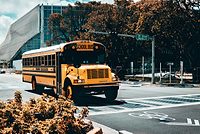5 digital safety concerns for K-12 student privacy and wellbeing

Image from Unsplash
A K-12 online privacy study led by a North Carolina State University (NC State) researcher reveals a need for consistent education about digital safety for elementary school students, school staff and parents. The study identified concerns raised by teachers about cyberbullying, students accessing inappropriate content online and other digital student safety issues.
The study, "Teacher and School Concerns and Actions on Elementary School Children Digital Safety," was based on interviews with 10 elementary school teachers. Drawing from concerns raised in the study, researchers identified cybersecurity strategies K-12 cybersecurity leaders can employ.
K-12 digital safety concerns
Researchers identified five general areas of concern for digital safety from the teacher interviews — concerns that were based on teachers’ observations in classrooms, as well as virtually when coursework was shifted online during the COVID-19 pandemic. Those five concerns included:
- Content students were accessing online: Teachers reported elementary students were attempting to access or searching for inappropriate content such as pornographic material or gambling websites.
- Student online conduct: Concerns about students’ online conduct, or behavior, included cyberbullying and sharing inappropriate information. Examples included students using private message functions or social media to pick on each other and students not understanding that their online behavior was trackable.
- Contact with others online: Teachers had concerns about students contacting strangers and giving away personal information without understanding the risks.
- “Contract”-related issues with privacy: These concerns included students not understanding basic security online, such as the importance of not sharing passwords, which could open school networks up to cyber risk.
- Issues with home use: Teachers noted concerns about a lack of routine or monitoring of online activity at home, and behavior from home bleeding into the school day.
School cybersecurity response
Researchers also mapped digital safety practices from schools and districts. Examples of response strategies included using firewalls and filters to block certain websites and social media sites, and in some cases, requiring teachers to get permission to use those sites in lessons.
“Even though there are filters and firewalls in place, there are so many new resources popping up every day,” said Florence Martin, first author of the report. “That’s where kids are trying to access inappropriate content from. The firewalls and filters are helpful, but it’s hard to block every website that’s out there.”
They also found some teachers are monitoring chats on networking platforms during their classes, and using tracking programs to see how kids are interacting or if they’re distracted. Researchers are planning a follow-up study of issues related to monitoring.
“Some level of monitoring is helpful — in the case of cyberbullying, you want to try to get to it early,” Martin said. “But nonstop surveillance can be a challenge. If everything a kid is doing is tracked, it means there is no privacy. Is there a balance there? That is what we need to research so we can support schools in keeping children safe, but not to the extent that we’re taking away their privacy.”
For more report information, click here.
Looking for a reprint of this article?
From high-res PDFs to custom plaques, order your copy today!





